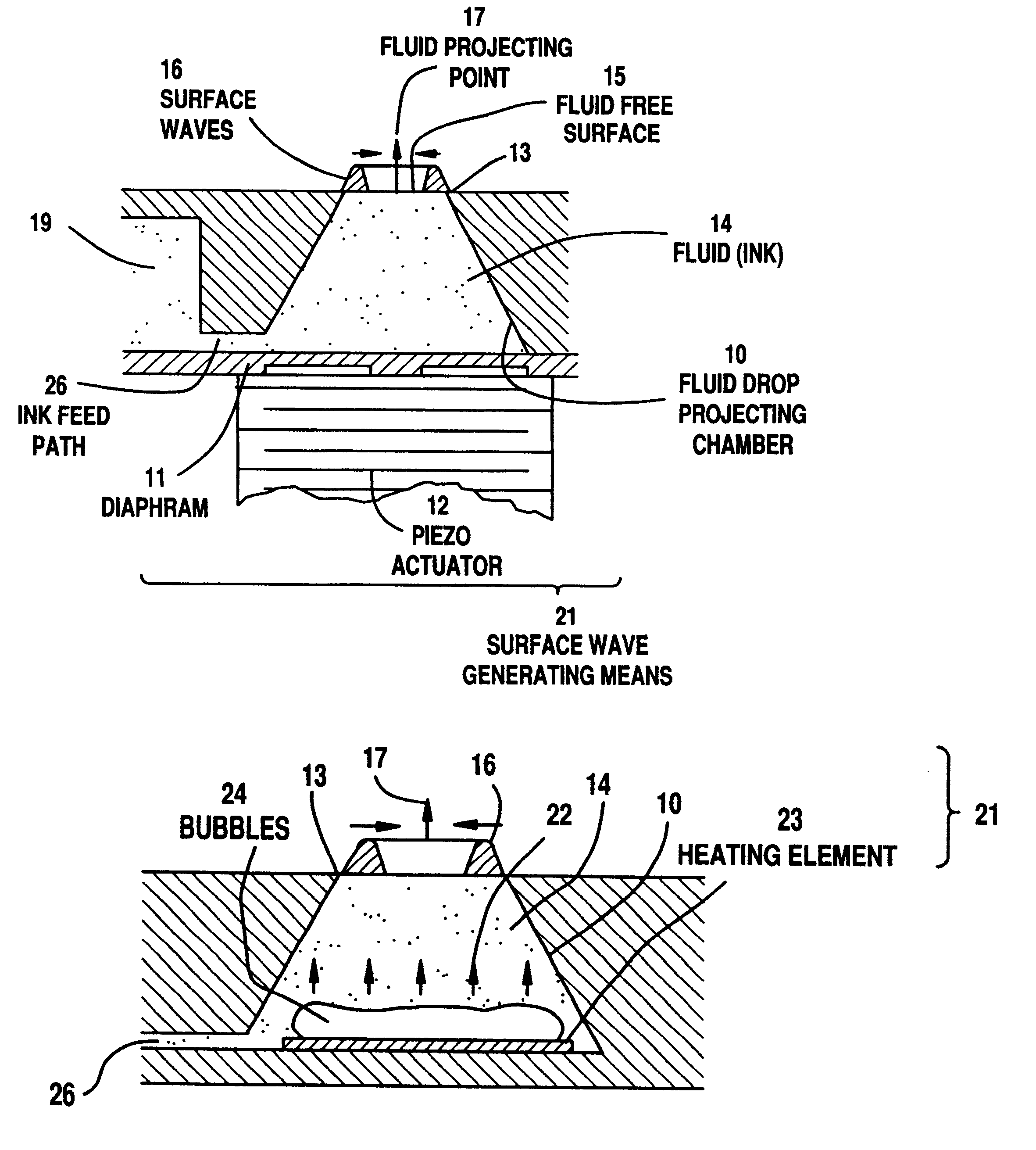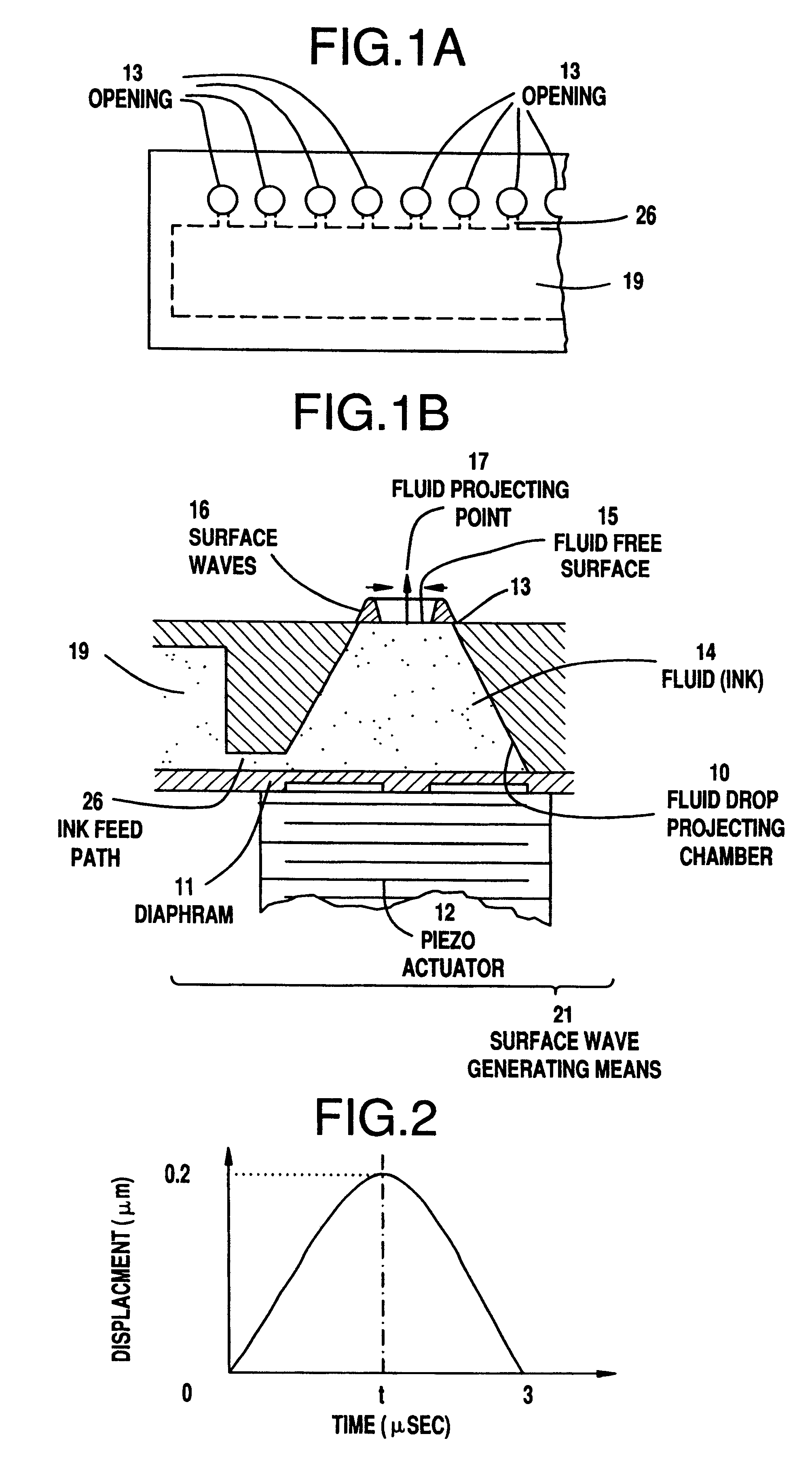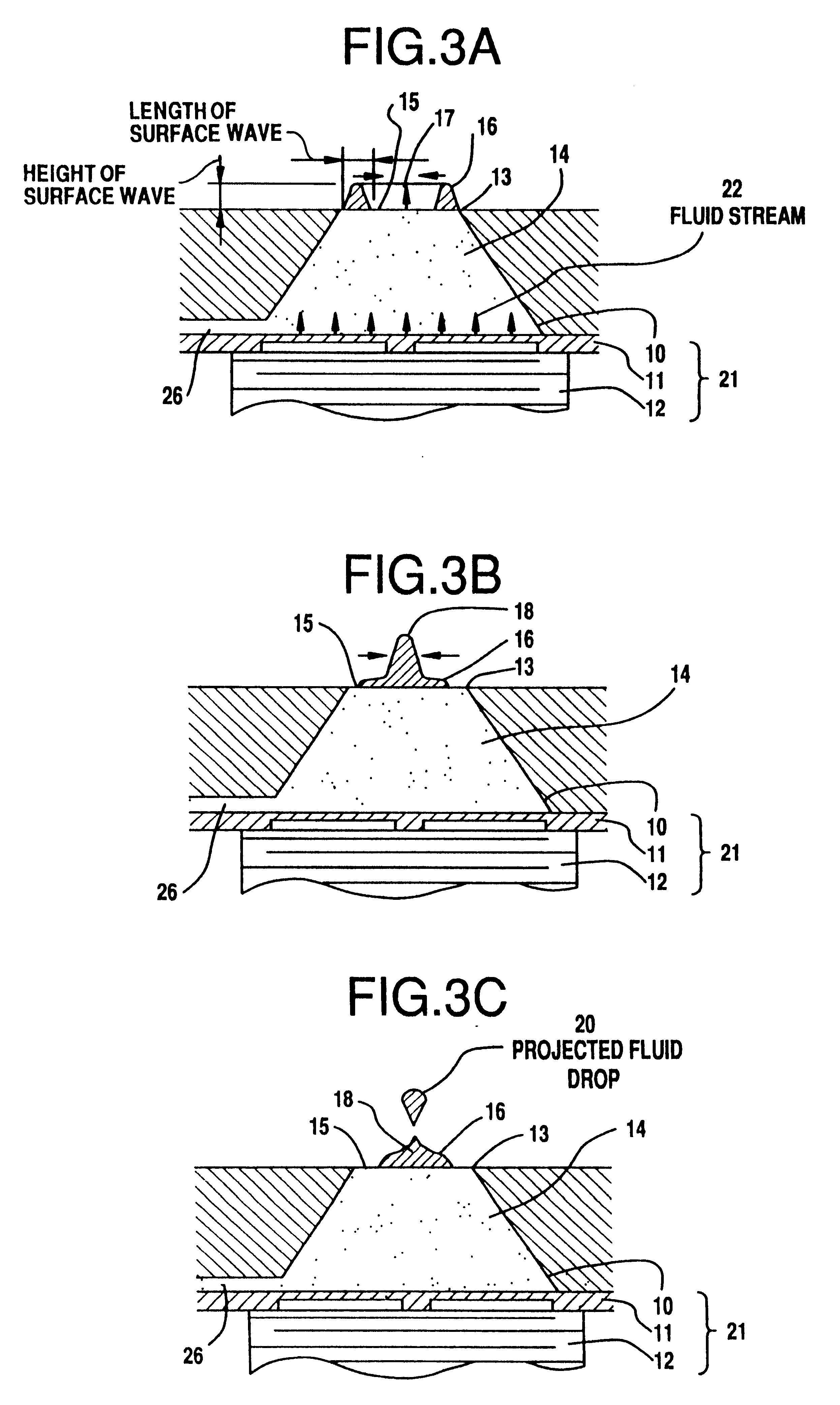Fluid drop projecting head using taper-shaped chamber for generating a converging surface wave
a projecting head and converging surface technology, applied in printing and other directions, can solve the problems of difficult to form so fine fluid drops, less reliable, nozzles are more susceptible to choking and consequently less reliable, etc., and achieve the effect of varying the drop siz
- Summary
- Abstract
- Description
- Claims
- Application Information
AI Technical Summary
Benefits of technology
Problems solved by technology
Method used
Image
Examples
embodiment 1
FIGS. 1A and 1B respectively show a plan and a cross section of fluid drop projecting apparatuses, which constitute a first preferred embodiment of the invention. As illustrated in FIG. 1A, Embodiment 1 comprises a plurality of fluid drop projecting apparatuses arranged in parallel for application to an ink jet recording head. Each individual fluid drop projecting apparatus, as illustrated in FIG. 1B, comprises a fluid drop projecting chamber 10 whose opening bore gradually expands in the direction of depth, a diaphragm 11 connected to the bottom of the fluid drop projecting chamber 10, and a pizeo actuator 12 connected to the diaphragm 11. The fluid drop projecting chamber 10 is filled with fluid ink 14, and is in continuity to an ink tank 19 via an ink feed path 26. Here, an opening 13 and the bottom of the fluid drop projecting chamber 10 are circularly shaped, respectively measuring 80 .mu.m and 240 .mu.m in diameter, and the fluid drop projecting chamber 10 is 100 .mu.m deep. T...
embodiments 2 and 3
FIGS. 6A and 6B show plans of fluid projecting apparatuses which constitute respectively second and third preferred embodiments of the present invention. FIG. 6A shows a plan of fluid drop projecting apparatuses each having an opening 13 of a regular dodecagon circumscribing a circle of 80 .mu.m in diameter, and FIG. 6B, a plan of fluid drop projecting apparatuses each having an opening 13 of a regular hexagon circumscribing a circle of 80 .mu.m in diameter. Other aspects than the shape of the opening 13 of these embodiments were the same as those of the fluid drop projecting apparatus illustrated in FIG. 1B. Under the same driving conditions for the piezo actuator 12 as for that of Embodiment 1, no fluid drop was projected by either of the apparatuses shown in FIGS. 6A and 6B. This state was observed stroboscopically in the same manner as for Embodiment 1. As in Embodiment 1, it was witnessed that the driving of the actuator resulted in the formation of surface waves in conformity ...
embodiment 4
In Embodiment 4, the bore of the circular opening 13 is 1 mm, greater than in Embodiment 1. Except for the opening 13, this embodiment has the same configuration as Embodiment 1 illustrated in FIG. 1B. When the piezo actuator 12 was driven for t=200 .mu.sec and its displacement d was gradually increased, steady projection of fluid drops became possible at d=4.8 .mu.m, when the drop diameter was about 280 .mu.m. It was confirmed that, even when the opening bore was a full millimeter, fluid drops 20 far smaller than the bore of the opening 13 could be projected.
Next, an experiment was carried out to determine the dependence of the diameter of projected fluid drops on the drive waveform of the piezo actuator 12. While the piezo actuator 12 was driven for t=200 .mu.sec in the foregoing example in which fluid drops of 280 .mu.m were projected, fluid drop projection was further attempted with different drive durations, varied to 145, 100 and 60 .mu.sec. The displacement d of the piezo act...
PUM
 Login to View More
Login to View More Abstract
Description
Claims
Application Information
 Login to View More
Login to View More - R&D
- Intellectual Property
- Life Sciences
- Materials
- Tech Scout
- Unparalleled Data Quality
- Higher Quality Content
- 60% Fewer Hallucinations
Browse by: Latest US Patents, China's latest patents, Technical Efficacy Thesaurus, Application Domain, Technology Topic, Popular Technical Reports.
© 2025 PatSnap. All rights reserved.Legal|Privacy policy|Modern Slavery Act Transparency Statement|Sitemap|About US| Contact US: help@patsnap.com



